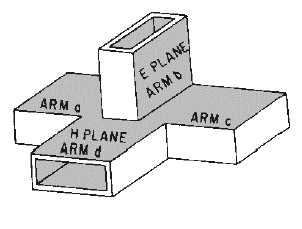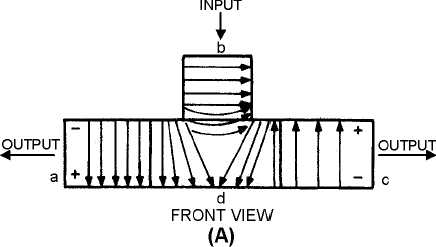1-53
Figure 1-66.—Magic-T hybrid junction.
If a signal is fed into the b arm of the magic- T, it will divide into two out-of-phase components. As
shown in figure 1-67A, these two components will move into the a and c arms. The signal entering the b
arm will not enter the d arm because of the zero potential existing at the entrance of the d arm. The
potential must be zero at this point to satisfy the boundary conditions of the b arm. This absence of
potential is illustrated in figures 1-67B and 1-67C where the magnitude of the E field in the b arm is
indicated by the length of the arrows. Since the E lines are at maximum in the center of the b arm and
minimum at the edge where the d arm entrance is located, no potential difference exists across the mouth
of the d arm.
Figure 1-67A.—Magic-T with input to arm b.



